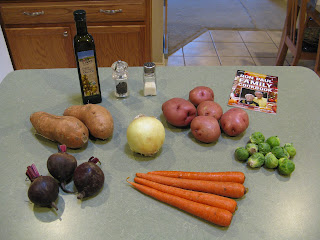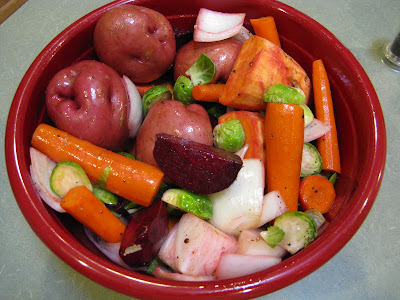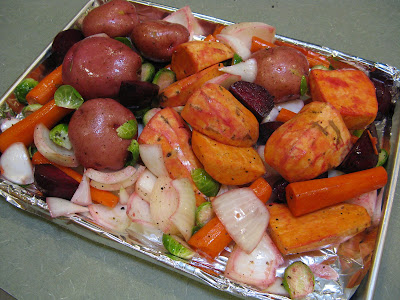So here’s the scenario: By the third year of the second Paul administration, all federal farm subsidies have been ended (despite fierce opposition from Tea Party-backed legislators from rural farm states) – in fact, the whole Department of Agriculture has been eliminated; all federally-owned lands (including National Parks) have been auctioned off and are under private ownership (with the landowners themselves issuing and selling their territories’ hunting and fishing licenses at their own discretion); the Federal Reserve has been eliminated (the video of Ben Bernanke recanting his monetary philosophy as he is being stretched on the rack had been the YouTube sensation of the year) and the U.S. is now on the starkest monetary gold standard (only gold coins and bullion are recognized as legal currency, with silver being acceptable for certain small fees… the obsolete paper Federal Reserve notes are only used for fancy, nostalgic games of Monopoly and – once shredded – as insulating material for the outside walls of backyard riot shelters); the BLM, the EPA, the DEA, and the BATF have all been eliminated by Executive Order; and the Fourteenth, Sixteenth, and Seventeenth Amendments have been repealed.
In this quasi-Libertarian utopia you – as you have so many times before – don your least-threadbare camo dinner jacket and gather with your family around the table in your dining bunker, offer up a prayer of thanks to the Author Of All Liberty, and dig in to a nearly-adequate meal of newly-caught game (those rabbits seem to be getting scarcer with each passing season, but you’ve heard that several miles to the northwest there’s a pond which might contain some turtles, so you make a mental note to check it out soon), freshly-foraged tubers, and repurposed-plastic-jugs of water from your solar-powered distiller. As you take your sustenance, you get a small hankering for something…
extra, something else along with your meal. Not a side dish, exactly – more like a condiment, a flavorful little something that could go with your food, mainly for the taste of it. Something like they used to have in… the Old Days.
Fortunately for your family, you had the foresight, back in the dark days of the Presidential campaign of 2012, to have prepared such a delicacy. “This deserves a special treat,” you say, as you unlock the reinforced steel door of the bunker’s storage cabinet, reach up to the highest shelf, and retrieve a small glass jar…
---------------------------------------------------------------
Pickles.
Who the hell makes pickles at home? This is asked by a man who grew up in – and has only ever lived in – suburban U.S.A. My father spent his childhood in small towns, but once he joined the Navy there was no looking back. It was the Big Apple for him as a young man, and my mother is a Brooklyn gal through and through. So naturally they raised their family in the suburbs, where pickles grew in large bulk barrels in front of supermarket deli counters. (Remember those?)
Who makes pickles at home? This asked by a man who declined to take the home economics course offered in Junior High School.
Who makes pickles at home? Can you tell by now that I don’t have my kitchen decorated with blue-and-white check wallpaper and images of ducks wearing blue scarves?
Ye country people make pickles at home, that’s who. In short, people who can.
Yes, can. I see this recipe calls for boiling jars, so what else could it be but a canning recipe? I have never canned food before and – frankly – I’m trying not to be scared. What if I don’t get it right? Childhood wisdom among my peers had it that if you opened a can of food spoiled by botulism and took even one whiff… well, by then it was too late. You would die instantly, guaranteed. Isn’t this too much to risk just for some pickles?
Well, nobody said this project of my attempting the Ron Paul Family Cookbook would be easy. I stand determined. No guts, &c. He can who thinks he can!
But I can only do so much: This recipe, as written, starts with a
gallon of sliced cucumbers, in addition to a fair amount of other ingredients, and yields seven eighths of a gallon. That’s just too voluminous for me to want to bother with, living above ground as I do. So, having purchased three pint-sized mason jars from trusty Dollar Tree, I decided to fractionate the recipe and deal with only three eights (or .375 as my handy calculator terms it) of its ingredients and yield. I don’t have a big allowance for food poisoning I’m willing to chance!
The ingredients are about what you might expect. Pickles are cucumbers, right? Cucumbers: check! And a few pungent seasonings (notably, tumeric [
sic] and celery seed)… not complicated at all.
 |
| Soon to be in a pickle |
The first thing to do is put sliced cucumbers and onion and unsliced garlic, all salted, together
 |
| Primary mix – note the solitary garlic |
and cover them with crushed ice for three hours.
 |
| Even cooler than a cucumber |
Why? I don’t know. There must be some chemical and/or thermal reaction going on at this point… maybe this is the closest the Ron Paul Family Cookbook comes to molecular cuisine. No matter – I didn’t flinch, this step was easy enough.
Toward the latter part of the waiting time I prepped my never-before-used mason jars by boiling them for a long time, thus (I figure) sterilizing the hell out of them.
 |
Out, OUT, ye spores of deadly contagion!
…Are you supposed to boil the lids? I don’t know.
I’m just trying not to die here. |
My humble kitchen is not set up for the aforementioned molecular cooking – and unlike Dr. Paul I don’t have access to medical equipment – so this pot of boiling water is the closest thing I have to an autoclave.
Once emerged from under its icy covering, the fragrant vegetable mixture was reminiscent of a summer salad.
 |
| If you dug raw vegetables you’d stop here |
But it still had more processing to go. The next step was to mix the sugar and vinegar (as contradictory a combination of foodstuffs as can be) and spices and boil,
 |
| Boiling vinegar… yum! |
which didn’t take long, then add the vegetables
 |
| We’re in this pickle together |
and heat for five minutes more. (I slightly overdid this heating, but that hadn’t seemed to do any damage.) Then fill the jars loosely, and boil them five minutes more.
 |
| Last chance to get the hygiene right |
One really needs a pair of tongs to handle all these hot objects! Which is what I used to lay out the jars and lids.
 |
| Maybe the plate shoulda been sterilized too? |
The lids cooled quickly enough for me to (delicately) handle those to seal the jars.
 |
The turmeric-stained cutting board tells the tale.
And nothing, but NOTHING, – not even alcohol,
scraping, or vigorous boiling – could remove the
sticky residue left on the lids by the jars’ price tags.
I hate that stuff! |
It was gratifying and reassuring to see, an hour or so later, the tops of all the lids had become concave as the jars cooled, indicating a pressure seal had been formed. That what’s supposed to happen, right?
•Twenty Hours Later•
I whipped up a some food that would go well with a side of pickles.
 |
| Maybe go good with some panini sandwiches? |
If the contents of the jar were spoiled, about this time I’d be able to tell without encountering too much putrescence. Time for the moment of truth.
 |
| Listen closely! |
The sealed lid pried off with a satisfying (and surprisingly loud) whoosh of air into the jar. And the contents smelled like pickles!
 |
I feel like the jar should’ve had a blue and
white check ribbon tied around it |
I was pleasantly surprised. Maybe the onions added something necessary to the mélange (and they did taste good), but the really important concern is: How were the pickle slices? I can happily report: Excellent! This was a universal assessment from everyone at the table. I can describe the pickles as semi-crunchy in the best way – who knew that mushy pickles could seem so wan in comparison? Their flavor was subtle, with just the right levels of acidic and sweet playing off each other, nothing overbearing or harsh, as sometimes is the case with store-bought pickles. This, clearly then, is the advantage of making pickles on one’s own kitchen. And, starting out small and simple is enough to make home canning seem not so daunting. I’m going to wait a few weeks before opening all the jars I canned, to really put my food preserving prowess to the test. With compatible dishes, I’m willing to eat these pickles any time!
Lesson learned: There’s no reason to hold out for complete societal collapse to make your own pickles – even happier occasions will do!
Rating: Five out of five lead-lined bunkers




















































